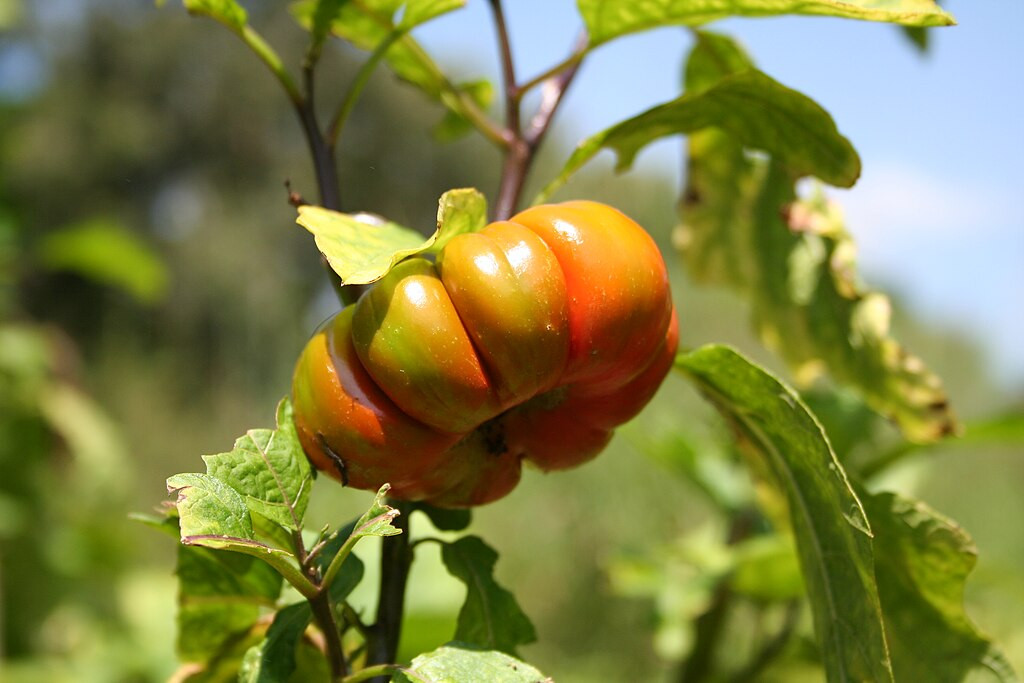Get 1000 Hours free
On the UCSD Supercomputer
Start Your Trial
Convergent evolution of plant prickles by repeated gene co-option over deep time.
Satterlee et al., Science 385, 514 (2024)
Darwin recognized the possible importance of trait convergence, the emergence of analogous traits in distantly related organisms. But how does trait convergence arise? While it is easy to imagine that similar selective pressures might lead to similar adaptations arising independently, the genetic mechanisms underlying such convergence are, in general, poorly described. There is considerable interest in gaining new insights into the role that underlying genetic structures play in promoting trait convergence. Satterlee et al. explore this explicitly in an elegant recent study of the prickles trait in the genus Solanum.
Prickles are epidermal outgrowths that impede predation and confer other advantages to plants. Prickles appeared in plants more than 400 Myr ago. Over this time, prickles have evolved independently at least 28 times. Solanum was chosen as a convenient subject for studying the influence of genetic variation within and between species in the convergent evolution of the prickles trait. Solanum includes domesticated species of economic importance, including tomatoes, eggplant, and flowering rose (so-called rose “thorns” are actually prickles), as well as many closely related species that have not been domesticated.
In eggplant, the presence or absence of prickles is known to be largely under the control of a single locus (prickleless, pl) on chromosome 6. The authors first fine-mapped pl in domesticated eggplant, defining a 100-kb interval with 10 annotated genes. They identified a splice-site mutation in a gene from the LONELY GUY (LOG) family. LOG genes are known to catalyze the final step in biosynthesis of bioactive cytokinin — a hormone with roles in plant cell proliferation and differentiation. In the initial characterization, loss of LOG activity resulted in sterile flowers with a single stamen and no pistil, hence the designation LONELY GUY.
While the relationship to prickles was unclear, further work showed that the same splice-site mutation was associated with the pl phenotype in 23 other known eggplant genomes. Among these 23 genomes, two independent mutations were identified in the LOG gene, which implied two independent evolutionary losses of prickles. Looking more broadly across eggplants, they found mutations in orthologous LOG genes caused parallel prickle losses in scarlet eggplant and Gboma eggplant as well. Synteny within the pl locus was seen across all three cultivated eggplant species although the prickleless scarlet eggplant and Gboma eggplant had different loss of-function mutations in the LOG PL gene. Both scarlet and Gboma species produced non-functional transcripts.
Cosegregation analyses from intraspecific crosses between prickled and prickleless parents showed homozygosity of the LOG mutant allele produces the prickleless phenotype as a Mendelian recessive. Another unlinked recessive variant independently contributed to prickle loss was also noted. The second locus mapped to a large interval on chromosome 4, which they designated pl2. Notably, all segregating homozygous mutant individuals at pl on chromosome 6 carried the LOG gene splice-site mutation. CRISPR-Cas9 genome editing was used to introduce a loss of function mutation in a prickled accession of S. aethiopicum. Transformants lacking mutations retained prickles while those possessing mutations were pl. Together the results convincingly establish loss of function in the LOG orthologue as a cause of pl phenotype.
Prickles in Solanum emerged more than ~6 Myr ago, well before the divergence of eggplant (2 Myr). Over 6 Myr, the genus Solanum has undergone 31 independent losses of prickles. To explore whether the LOG mutation is responsible for prickle loss throughout Solanum, the authors sampled DNA from additional prickleless Solanum species and compared them with their prickled close relatives. Comparisons included a wide variety of wild and domesticated species. They found an additional 12 allelic mutations predicted to deleteriously affect PL function across the spiny Solanum. Together with the 4 mutations noted above, the work identified LOG mutations that underlie 14 of the 31 recorded losses of prickles, while prickled species from closely related lineages did not carry these mutations. In two cases, identical LOG PL mutations were identified in geographically distinct species, suggesting these mutations arose independently, and are not part of an ancestral relationship. It remains to be seen if other alleles are involved in the 17 remaining prickle loss events.
As noted above, LOG genes are typically involved in cytokinin production, and are essential for flower development. The involvement of a LOG gene in prickle development suggests that an ancestral orthologue has been recruited for prickle development. It apparently has no further role in flower development, since the presence or absence of prickles has no obvious impact on flower development in these species. What allows a normally essential gene to be co-opted in this way for prickle development? It seems likely that recruitment of LOG orthologues is made possible by extensive gene duplications in the LOG family. The mean number of annotated LOG genes is 15 in Solanum. The presence of multiple copies provides the redundancy necessary to enable functional recruitment of an ancestral LOG1 for the purpose of prickle development.
The authors found synteny is preserved across all Solanum, indicating that the PL locus evolved from an orthologous LOG gene in an event that predates divergence of Solanum. By studying coexpression of LOG family members more broadly across plants, the authors found tomato SlycPL and three other tomato LOG genes have a conserved expression pattern with Arabidopsis AthaLOG1. These LOG1 genes have therefore maintained functional conservation across ~120 Myr. Expression studies showed expression of Solanum PL is tissue-specific, with expression being strongest in flowers and prickles, whereas Arabidopsis AthaLOG1 has a broad expression pattern across tissues. The results support the theory that an ancestral LOG1 gene was recruited for prickle development.
Key take home points:
